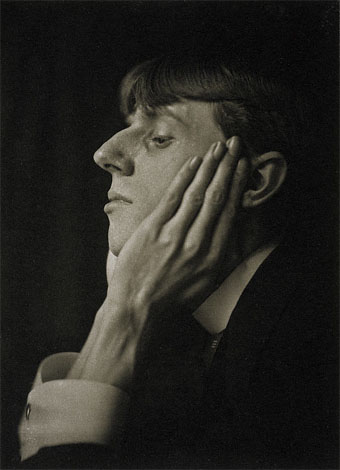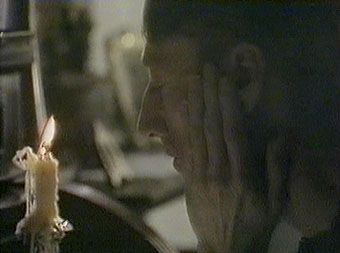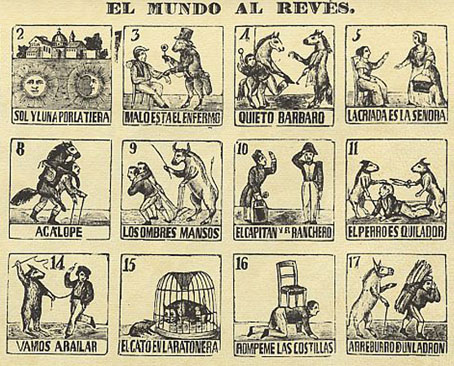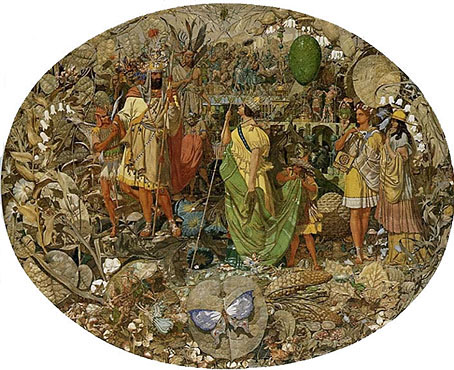
Contradiction: Oberon and Titania (1854–58).
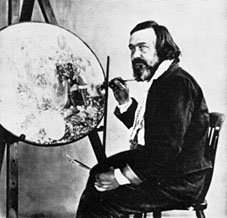
Richard Dadd painting Contradiction, c. 1856.
Of all the paintings based on A Midsummer Night’s Dream my favourite is this one by Richard Dadd (1817–1886), the artist who famously murdered his father in a fit of psychosis and spent the rest of his days as an inhabitant of Bethlem Royal Hospital in London. Dadd painted a number of fairy pictures while incarcerated, giving a popular Victorian genre a taste of his own unique vision. The most well-known of these is The Fairy-Feller’s Master-stroke (1855–64), an unfinished work rendered in minute detail. Contradiction is a more coherent composition and even more finely-detailed, so much so that any web reproduction is bound to be a disappointment. I’d post a larger view but the copy I have in Patricia Allderidge’s 1974 monograph is spread over two pages. She says of it there:
Painted in Bethlem for Dr W Charles Hood, physician superintendent of Bethlem Hospital. Some of the hordes of tiny figures swarming through the foliage are nearly invisible to the naked eye. At the bottom they are mainly soldiers with shields and winged fairies in voluminous robes; at the top, among the weird but exquisite still life and architectural contrivances, are a group of revellers with the body of a deer and various other individuals, all highly fantastic. The details are painted with almost incredible precision, epitomized by the perfectly formed features of the smallest fairies and the dewdrops lying thickly on every surface and hanging from every leaf. Although this is in most ways utterly different from the early fairy paintings, a number of features are developed from Titania Sleeping (below), notably some of the plants, and the overall structure of the composition. A striking contrast is between the dainty moon-born Titania of the first work and the hulking Amazon who here tramples elves underfoot.
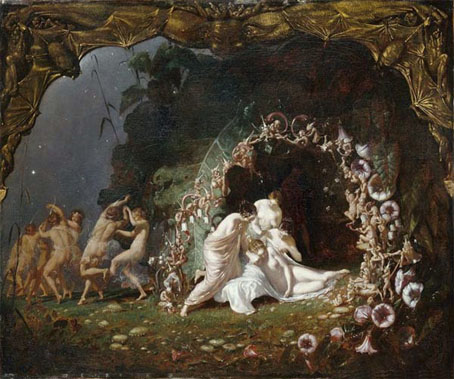
Titania Sleeping (1841).
Titania Sleeping resides now in the Louvre. I read some years ago that Andrew Lloyd-Webber, a big collector of Victorian art, owned Contradiction but can’t say whether this is still the case.
Elsewhere on { feuilleton }
• The fantastic art archive
Previously on { feuilleton }
• A Madmen’s Museum
• The art of Franz Xaver Messerschmidt, 1736–1783


